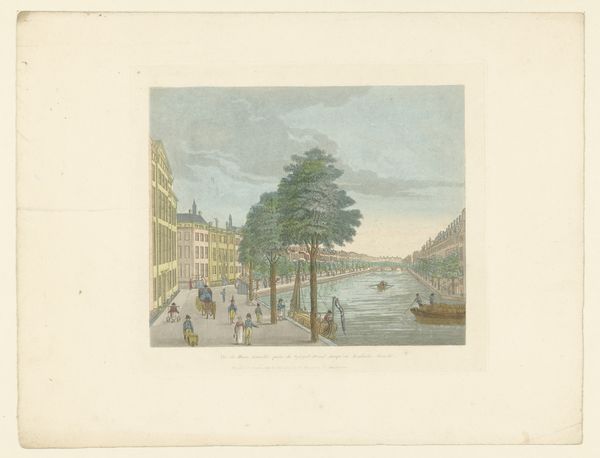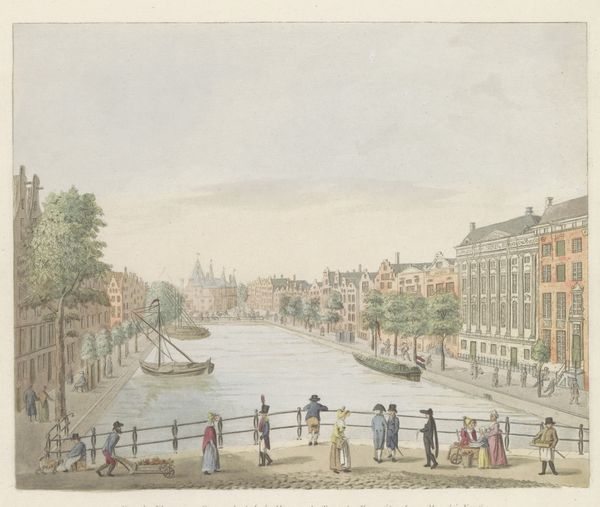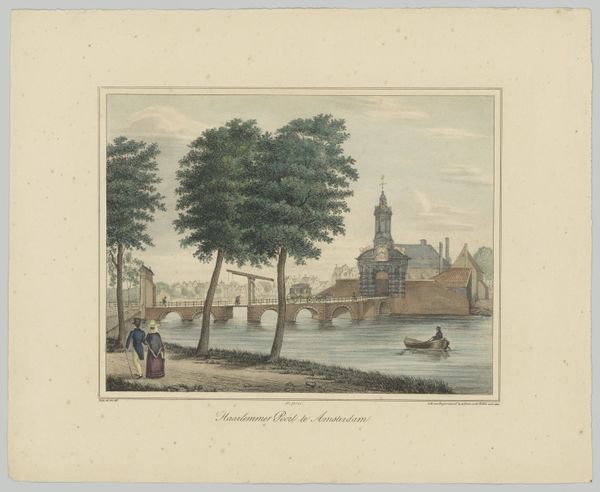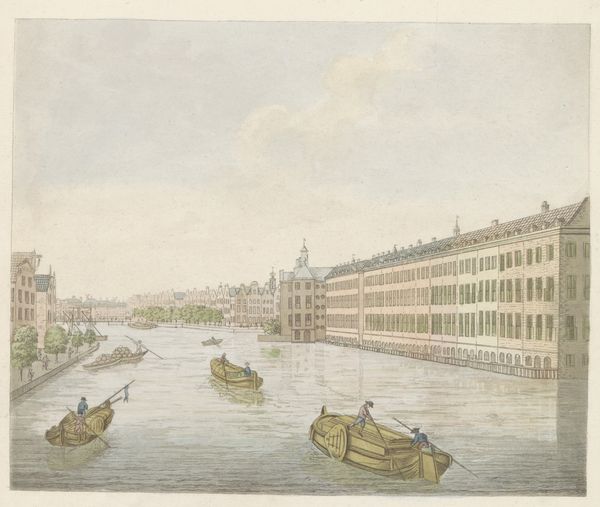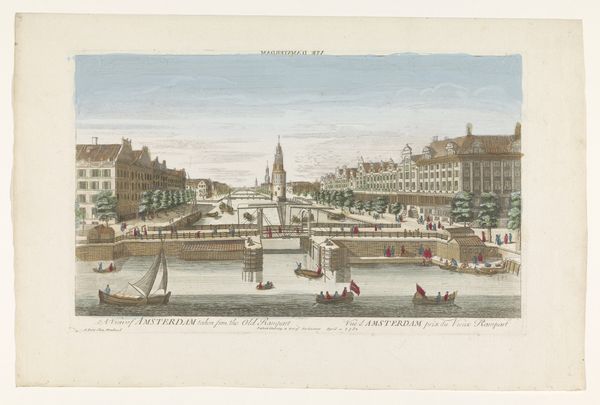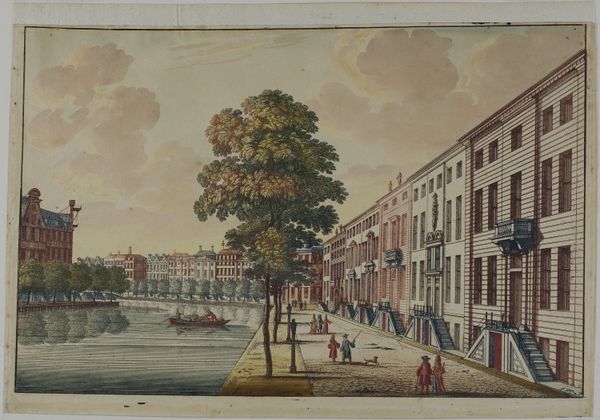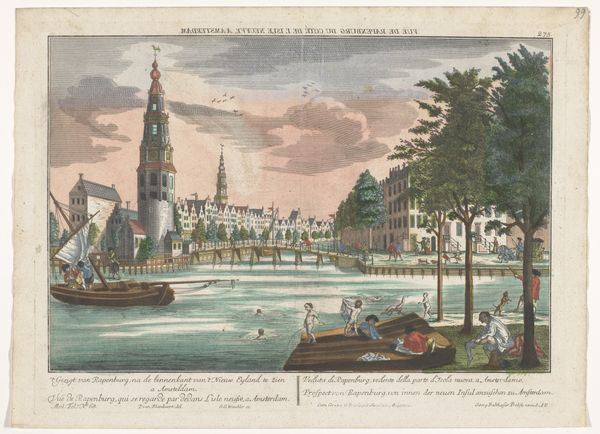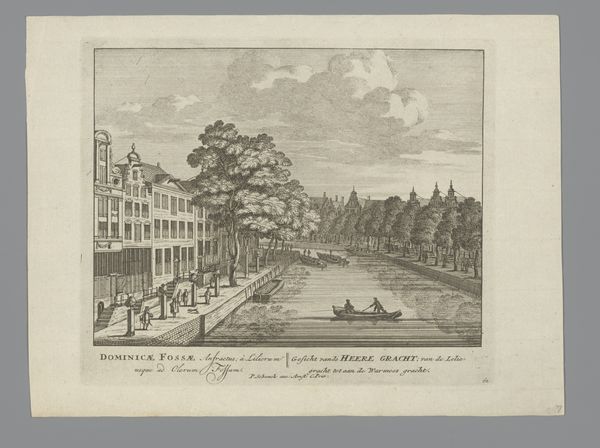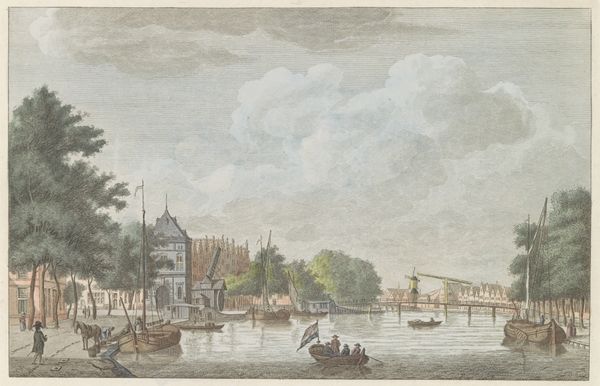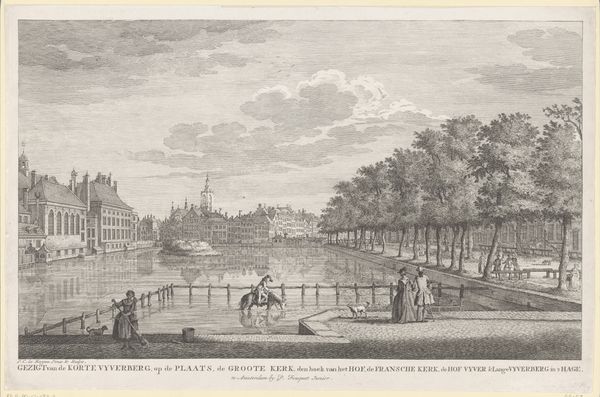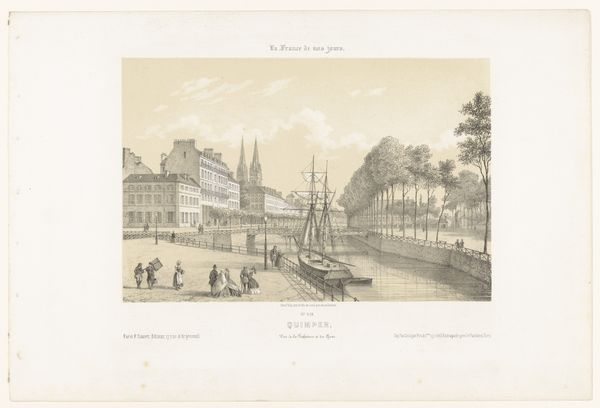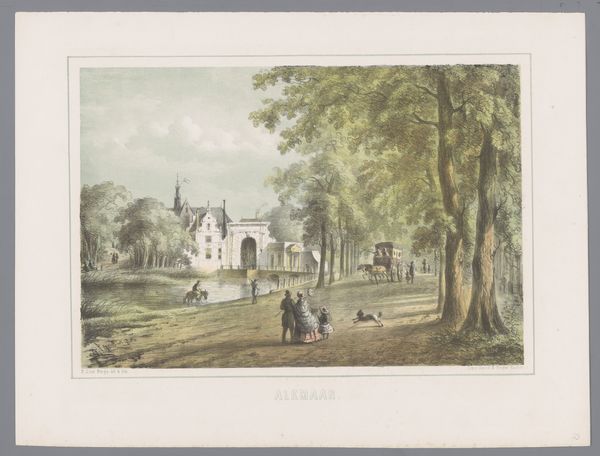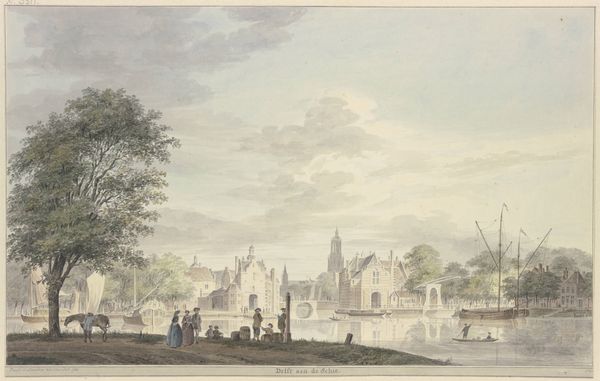
watercolor
#
landscape
#
watercolor
#
coloured pencil
#
romanticism
#
cityscape
#
watercolour illustration
Dimensions: height 181 mm, width 209 mm
Copyright: Rijks Museum: Open Domain
Curator: I see stillness. A hushed, early morning Amsterdam kind of quiet. A gentle watercolour. Editor: Precisely. What we have here is Evert Maaskamp’s “Gezicht op de Herengracht,” likely made sometime between 1810 and 1825. The Romanticist influence is clear. Curator: Those buildings feel as though they are breathing. Each has its own presence, and a story quietly whispering behind its walls. The colour palette adds to this dreamlike stillness; the washed-out pinks and blues are so beautifully restful. Editor: Restful, yes, but I also see a visual encoding of the deep societal stratifications inherent to canal-side living at the time. This wasn't a generic "street view," but a deliberate focus on the Herengracht, literally “Gentlemen’s Canal”, showcasing wealth and power in the wake of Dutch colonialism and, let’s not forget, intense internal political instability. Curator: Interesting. So the people, then, are part of that statement? They seem, on the surface, like quaint, picturesque touches. Like carefully positioned chess pieces. Editor: Absolutely. Consider how they're situated within the broader urban fabric. The people occupying that space are performing a social function—reinforcing the accepted order of things. The canal, the buildings, even those trees you find so appealing, Curator, contribute to an overall image of prosperity. Curator: I guess, I look for the romance and get lost in it. But even that searching –that emotional impulse– reflects how people wanted to portray themselves. This kind of gentle depiction does have a politics of its own. A conscious act. Editor: Indeed, a potent reminder that even in ostensibly peaceful depictions, the undercurrents of social history and political positioning are crucial to understanding an artwork's significance. Thanks to artists like Maaskamp we can learn how social and power dynamics influence even everyday moments in art. Curator: That subtle power. Well, I won't look at pastel shades quite the same way again. Editor: The canal’s beauty hides a complex network of power structures and financial prowess—not so quiet, after all.
Comments
No comments
Be the first to comment and join the conversation on the ultimate creative platform.
